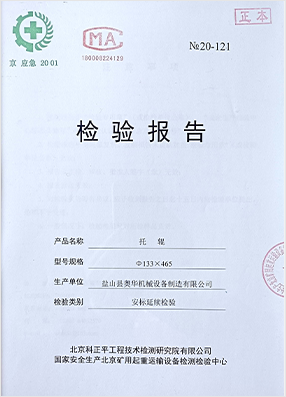 Afrikaans
Afrikaans  Albanian
Albanian  Amharic
Amharic  Arabic
Arabic  Armenian
Armenian  Azerbaijani
Azerbaijani  Basque
Basque  Belarusian
Belarusian  Bengali
Bengali  Bosnian
Bosnian  Bulgarian
Bulgarian  Catalan
Catalan  Cebuano
Cebuano  Corsican
Corsican  Croatian
Croatian  Czech
Czech  Danish
Danish  Dutch
Dutch  English
English  Esperanto
Esperanto  Estonian
Estonian  Finnish
Finnish  French
French  Frisian
Frisian  Galician
Galician  Georgian
Georgian  German
German  Greek
Greek  Gujarati
Gujarati  Haitian Creole
Haitian Creole  hausa
hausa  hawaiian
hawaiian  Hebrew
Hebrew  Hindi
Hindi  Miao
Miao  Hungarian
Hungarian  Icelandic
Icelandic  igbo
igbo  Indonesian
Indonesian  irish
irish  Italian
Italian  Japanese
Japanese  Javanese
Javanese  Kannada
Kannada  kazakh
kazakh  Khmer
Khmer  Rwandese
Rwandese  Korean
Korean  Kurdish
Kurdish  Kyrgyz
Kyrgyz  Lao
Lao  Latin
Latin  Latvian
Latvian  Lithuanian
Lithuanian  Luxembourgish
Luxembourgish  Macedonian
Macedonian  Malgashi
Malgashi  Malay
Malay  Malayalam
Malayalam  Maltese
Maltese  Maori
Maori  Marathi
Marathi  Mongolian
Mongolian  Myanmar
Myanmar  Nepali
Nepali  Norwegian
Norwegian  Norwegian
Norwegian  Occitan
Occitan  Pashto
Pashto  Persian
Persian  Polish
Polish  Portuguese
Portuguese  Punjabi
Punjabi  Romanian
Romanian  Russian
Russian  Samoan
Samoan  Scottish Gaelic
Scottish Gaelic  Serbian
Serbian  Sesotho
Sesotho  Shona
Shona  Sindhi
Sindhi  Sinhala
Sinhala  Slovak
Slovak  Slovenian
Slovenian  Somali
Somali  Spanish
Spanish  Sundanese
Sundanese  Swahili
Swahili  Swedish
Swedish  Tagalog
Tagalog  Tajik
Tajik  Tamil
Tamil  Tatar
Tatar  Telugu
Telugu  Thai
Thai  Turkish
Turkish  Turkmen
Turkmen  Ukrainian
Ukrainian  Urdu
Urdu  Uighur
Uighur  Uzbek
Uzbek  Vietnamese
Vietnamese  Welsh
Welsh  Bantu
Bantu  Yiddish
Yiddish  Yoruba
Yoruba  Zulu
Zulu types of pulley in belt conveyor
Types of Pulleys in Belt Conveyors
Belt conveyors are pivotal in modern industrial applications, facilitating the efficient movement of materials across various processes. At the core of these conveyors are pulleys, which play a crucial role in the system's functionality and performance. Understanding the types of pulleys used in belt conveyors can help optimize their design and application, ensuring improved efficiency and reliability in material handling.
1. Drive Pulleys
Drive pulleys, also known as head pulleys, are the primary component responsible for driving the belt forward. They are typically located at the discharge end of the conveyor. The drive pulley is connected to a motor, which applies torque to the pulley, consequently moving the belt. Generally, these pulleys are wider and equipped with a larger diameter compared to other types of pulleys to accommodate higher load capacities. Ensuring the right material and design for drive pulleys is crucial, as they are subjected to significant wear and stress during operation.
Idler pulleys, also referred to as tail pulleys, play a critical role in supporting the belt and maintaining its tension throughout the conveyor system. These pulleys are usually located at the tail end of the belt conveyor and do not have a direct connection to the drive motor. Their primary purpose is to facilitate the smooth movement of the belt while minimizing friction and wear. Idler pulleys can be further classified into different categories based on their specific application, such as return, impact, and training idlers.
- Return Idlers These are designed to support the return section of the conveyor belt and help maintain the belt's alignment. - Impact Idlers Positioned at points where the material is loaded onto the belt, impact idlers assist in absorbing the shock during material transfer, thereby protecting the belt and other components from damage. - Training Idlers These pulleys help to keep the belt aligned and prevent any lateral movement, which could lead to misalignment and subsequent operational issues.
types of pulley in belt conveyor

3. Snub Pulleys
Snub pulleys are utilized to increase the friction between the drive pulley and the belt, which in turn enhances the belt's grip on the pulley. These pulleys are strategically placed to provide additional tension in critical areas, facilitating smoother belt movement and better load handling. By altering the angle of the belt against the drive pulley, snub pulleys can significantly improve the efficiency of the conveyor system, particularly in applications that require the belt to handle heavy loads or navigate inclines.
4. Take-Up Pulleys
Take-up pulleys are essential for maintaining proper tension in the conveyor belt. As the belt stretches over time due to wear or load, take-up pulleys adjust the tension to ensure optimal performance. They are typically equipped with a mechanism that allows for precise movement, either manually or automatically. The tension maintained by take-up pulleys is crucial for preventing slippage, which can lead to material spillover and decreased efficiency.
Conclusion
In conclusion, the types of pulleys in belt conveyors—drive, idler, snub, and take-up—each serve unique and essential functions that contribute to the overall efficiency and reliability of material handling systems. Selecting the appropriate type of pulley and understanding its role within the conveyor system can enhance performance, reduce operational costs, and minimize maintenance requirements. As industries continue to evolve, the development and application of advanced pulley designs will undoubtedly play a critical role in the future of conveyor technology, ensuring that material handling remains efficient and effective.
-
Revolutionizing Conveyor Reliability with Advanced Rubber Lagging PulleysNewsJul.22,2025
-
Powering Precision and Durability with Expert Manufacturers of Conveyor ComponentsNewsJul.22,2025
-
Optimizing Conveyor Systems with Advanced Conveyor AccessoriesNewsJul.22,2025
-
Maximize Conveyor Efficiency with Quality Conveyor Idler PulleysNewsJul.22,2025
-
Future-Proof Your Conveyor System with High-Performance Polyurethane RollerNewsJul.22,2025
-
Driving Efficiency Forward with Quality Idlers and RollersNewsJul.22,2025





























